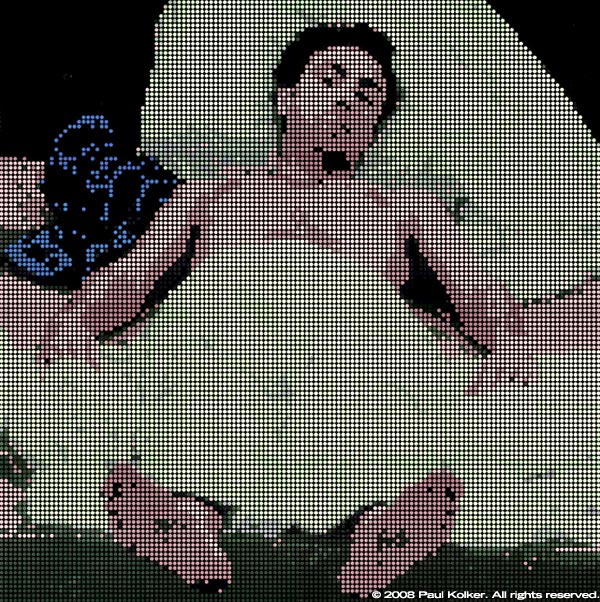
Picture primordial man and woman, in their youthful vitality or in eternal repose lying side-by-side on their backs, as in Adam and Eve, 2008, acrylic and silkscreen on canvas, a fracolor in thirty-two parts, 96 x 192 inches. Together they have evolved into a complex and enduring chain, called “humankind,” linking each lifecycle generation to a past and future one. The perceptual narrative of Adam and Eve, 2008 is subject to our imagination and dreams, fantasies and fears. We may metaphorically enter the painting and become Adam or Eve and find ourselves in an unusual perspective, foreshortened and in the supine, like the renaissance imagination defining that masterful pose; or was it a lens like Kolker’s narrow angle telephoto view from above and from afar that became Mantegna’s “artificial perspective?”
It is the view from afar that is mainly dispositive of Kolker’s works. Employing a process called fracolor, an image is deconstructed and fractionated into a defined number of panels on each of which 1089 squares are painted in acrylic using primary optical and pigment colors and their tints and shades. Color is mixed with black and/or white but not with another color. A silk-screened grid circumscribes the colored dots. From close-up the painting appears minimally defined and obscure. When viewed from afar it becomes more highly defined.
In stark contrast to Kolker’s large-scale low definition paintings, a photographic and computer based image enhancement technique, as developed by the artist, relies on the mathematics of the 33 x 33 dot grid resulting in 1089 dots per inch and an astonishing high-definition image.
Paul Kolker: Prone To Being Supine — Opening May 15, 2008.
